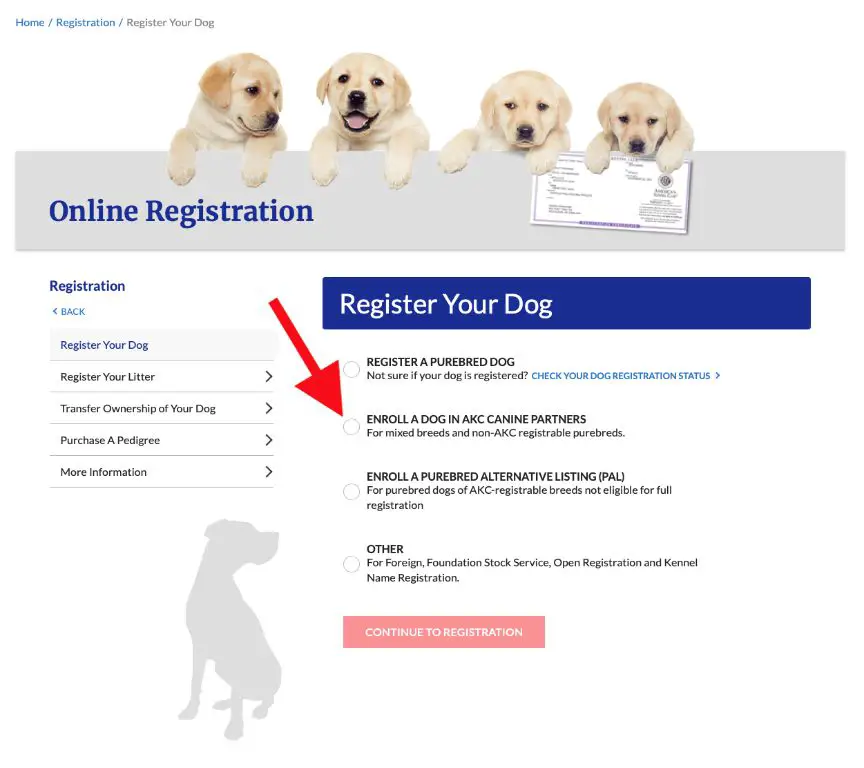Introduction
Dog breeds have been a part of human life for thousands of years. As the number of dog breeds grew over time, the need arose for a scientific system of naming and classifying them. Today, all recognized dog breeds have a scientific name based on a standardized system.
This article will explore the history and rationale behind scientific dog breed names. We’ll look at how they are formulated, who uses them, and some interesting controversies regarding dog breed names. Whether you are a dog lover, breeder, veterinarian, or researcher, understanding the science behind dog breed names can provide valuable insights.
History of Dog Breed Names
Dogs have been domesticated for thousands of years, with the first records of dogs bred specifically for roles alongside humans dating back over 6,000 years. These early dogs were bred for practical working purposes like hunting, herding, guarding and companionship. Dogs were named based on where they originated from or their purpose and function alongside humans. For example, sheepdogs were given names related to their herding capabilities and schnauzers got their name from the German word for “snout” due to their distinctively bearded snouts that helped them control and herd livestock. As dogs diversified into distinct breeds based on location and specialized talents over hundreds of years, their common names reflected these geographical or functional origins.
Many hounds, terriers, and shepherd breeds took their common names from the jobs they were bred to do. Sighthounds that pursued prey by sight (like greyhounds) were named for their hunting style. Spaniels were named after Spain, where they originated as bird-flushing dogs. Nordic breeds like elkhounds got their common names from the regions where they chased large game. For most of history, dogs were bred for practical working roles alongside humans, so their common breed names derived from their appearances, temperaments and talents that made them well-suited to specialized jobs in specific locations.
What are Scientific Names?
Scientific names are a formal naming system used to uniquely identify species. They consist of two Latin or Latinized words – the genus name followed by the species name. For example, the scientific name of the domestic dog is Canis familiaris.
The purpose of scientific names is to create universal and unambiguous identifiers for each species. This helps avoid confusion that can arise from common names, which can vary by region, language, and culture. Scientifc names provide a standard terminology that allows people around the world to be certain they are referring to the same animal or plant.
Scientific names are usually derived from Latin or Greek words describing a species’ characteristics or honoring noteworthy scientists. They are established through a formal process and governed by strict rules of the International Code of Zoological Nomenclature.
In summary, scientific names are a formal, universal system for identifying species. They enable clear communication in science, conservation, and other disciplines by providing unique Latinized names for every organism.
Dog Breed Scientific Names Explained
The scientific name for a dog breed follows a standardized format consisting of the genus name followed by the species name. The genus name is always capitalized, while the species name is all lower case. For example:
Canis familiaris – This is the scientific name for domestic dogs. Canis is the genus and familiaris is the species.
Some common examples of dog breed scientific names:
- Labrador Retriever – Canis familiaris familiaris
- German Shepherd – Canis lupus familiaris
- Siberian Husky – Canis familiaris familiaris
- Golden Retriever – Canis lupus familiaris

The first part of the scientific name, the genus Canis, identifies the dog as part of the genus Canis which includes wolves, coyotes, jackals and domestic dogs. The second part, the species name, provides more specific information about the breed.
The scientific names convey the evolutionary relationships between dog breeds and other canid species. While in everyday usage we refer to breeds by their common names, the scientific binomial nomenclature provides a standardized taxonomy for classifying all organisms.
Why Use Scientific Names for Dogs?
There are several benefits to using the scientific names for dog breeds over their common names:
Uniformity – The scientific name is consistent across languages and regions, while common names can vary. This reduces confusion, especially in international contexts.
Specificity – Scientific names precisely identify the exact breed, while common names may be vague or describe multiple breeds. This helps avoid ambiguity.
Stability – Scientific names remain the same over time, while common names may change with shifts in popularity or culture. This provides consistency even as language evolves.
Clarity – Scientific names are based on defined rules and Latin or Greek roots, making their meanings more clear. Common names can have obscure or confusing origins.
Inclusiveness – Even rare or new breeds have a designated scientific name, whereas they may lack common names in certain regions.
Lineage – The origins and ancestry of a breed are often embedded in its scientific name. This helps demonstrate genetic relationships.
Academic – Scientific names represent the most precise, technical way to identify breeds, important for researchers, breeders, and regulators.
In summary, the uniformity, specificity, stability, and inclusiveness of scientific names provide clarity and precision. This makes them the preferred terminology in technical, academic, and international contexts related to dog breeds.
Who Uses Scientific Dog Breed Names?
Scientific dog breed names are most commonly used by professionals and organizations involved with purebred dogs, such as:
Kennel Clubs

Kennel clubs like the American Kennel Club (AKC) and The Kennel Club in the UK use scientific names to identify and register purebred dog pedigrees. For example, the AKC refers to the German Shepherd breed by its scientific name Canis lupus familiaris.
Dog Breeders
Reputable breeders, especially of purebred dogs, tend to use scientific names in lineage papers and pedigrees. Using the scientific name adds legitimacy and accuracy when tracking dog breeds over generations.
Veterinarians
Veterinarians may use scientific dog breed names on medical records, prescriptions, and other documentation to precisely identify the breed, especially for purebred dogs. This assists with medical research related to breed-specific conditions.
Dog Show Judges
Judges of major dog shows like Crufts and Westminster rely on scientific breed names to evaluate dogs against breed standards and properly categorize them for competition. Using the scientific name avoids ambiguity.
Academic Researchers
Scientists studying dog behavior, genetics, breeds, and health refer to scientific breed names in research papers to be taxonomically accurate when citing breeds.
Fun Facts about Dog Breed Names
Dog breed scientific names can reveal some fascinating trivia. Here are some interesting facts about the unique names behind our furry friends:
- The scientific name for Chihuahuas is Canis lupus familiaris. Canis lupus translates to “dog wolf” – an apt name for this tiny but fierce breed!
- Poodles have the longest scientific name of any dog breed. Their full scientific name is Canis lupus familiaris var. barbonicus poodle. “Barbonicus” refers to the poodle’s distinct curly coat.
- Siberian Huskies’ scientific name, Canis lupus familiaris var. borealis, includes “borealis” meaning “northern” – a nod to their Arctic sled dog roots.
- Labrador Retrievers have the name Canis lupus familiaris var. labradorius, with “labradorius” referencing Labrador, Canada where they originated.
- The scientific name for Beagles, Canis lupus familiaris var. leporarius, contains “leporarius” meaning “hare” in Latin, highlighting their history as rabbit-hunting dogs.

From geographic references to coat textures, dog breed scientific names often provide unexpected insight into canine history and traits. Perusing scientific names allows dog lovers to appreciate the rich backgrounds of their favorite breeds.
Controversies and Changes
There have been some controversies surrounding dog breed names over the years. Some people argue that certain breed names promote negative stereotypes or are insensitive. For example, some have called for changing historically common names like “Indian Dog” or “Eskimo Dog” to be more culturally respectful.
Other controversies relate to banning certain breeds or requiring special permits to own dogs with certain names. “Pit Bull” is a common breed name that’s faced various restrictions despite the objections of many owners and experts who say breed specific legislation is misguided.
Beyond these controversies, dog breed names naturally evolve over time. As new breeds are developed or older breeds split into distinct variants, new names emerge. The origins of names can also become muddled or disputed. Groups sometimes advocate for official name changes to better reflect a breed’s history or modern status.
Overall, while dog breed names aim to standardize groups of dogs based on ancestry and traits, there are always debates around naming conventions. As cultural sensitivities and canine genetics knowledge changes, breed names will likely continue to be reevaluated and updated periodically.
Resources for Looking Up Names
If you want to find out the scientific name for your dog’s breed, here are some helpful resources:
- The American Kennel Club website has a dog breed encyclopedia that lists the scientific name for each recognized breed. You can browse alphabetically or search by breed name.
- Wikipedia has a comprehensive list of dog breeds that includes the scientific names. Entries are grouped by purebred, crossbreed, and pariah dog groups.
- Many dog breed clubs and registries list the scientific name on the breed’s information page. For example, the Labrador Retriever Club has the name “Canis lupus familiaris” on their breed facts page.
- Veterinary sites like Vetstreet provide dog breed profiles with scientific names included. Their site allows searching by breed to pull up the scientific name.
With these helpful online resources, you can easily discover the scientific name for any dog breed. Knowing the scientific classification can provide interesting trivia and help you better understand your dog’s ancestry.

Conclusion
In summary, most dog breeds do have a scientific name in addition to their common name. These scientific names are usually derived from Latin or Greek and consist of the genus and species of the dog. For example, the scientific name for a German Shepherd is Canis lupus familiaris.
Knowing the scientific classification can provide deeper insight into a dog’s history and characteristics. However, casual owners rarely use the scientific names, as the common names are widely recognized. Professional dog breeders, veterinarians, and researchers are more likely to use the Latin-based terminology.
Scientific names help distinguish between very similar breeds and clarify genetic relationships. They also enable clear communication across different languages. However, names do sometimes change as new research emerges.
Dog breed names are a fascinating fusion of science, language, culture, and history. While common names meet most everyday needs, scientific names play an important role in understanding the canine family tree.